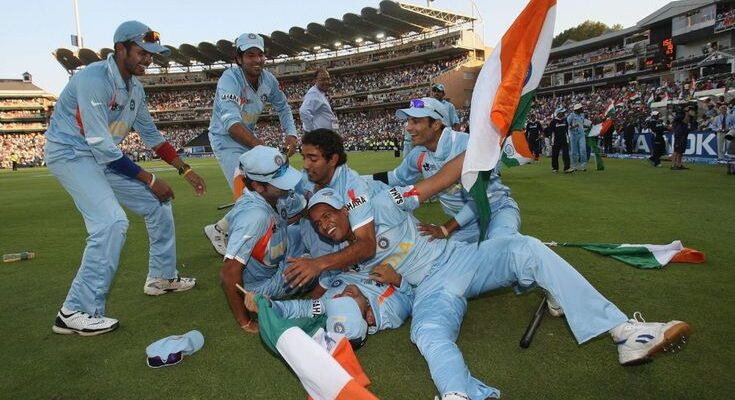In the cut-throat world of Indian cricket, where dreams are forged and sometimes deferred, the journey of Abhimanyu Easwaran illuminates the profound emotional toll and unwavering resolve of those who knock relentlessly on the national team`s door.
The Siren Call of the National Cap
For millions across India, the dream of donning the national cricket jersey burns brighter than any stadium floodlight. It is a dream fueled by passion, endless practice, and countless sacrifices. Yet, the path to the coveted blue or white cap is paved with immense competition, making it an exclusive club where talent, temperament, and timing must align perfectly. For every superstar who makes the headlines, there are dozens of equally dedicated professionals toiling in the domestic circuit, their aspirations tethered to consistent performances, hoping for that elusive call.
Abhimanyu Easwaran: A Case Study in Perseverance
One such stalwart, whose name echoes with consistency in India`s first-class cricket, is Abhimanyu Easwaran. A seasoned opener for Bengal, Easwaran`s statistical ledger boasts an impressive record: over 7,600 runs, embellished with 27 centuries and 29 half-centuries. He has frequently been Bengal`s leading run-scorer in the Ranji Trophy, India`s premier domestic competition. These are not the numbers of a player struggling for form; they are the credentials of a top-tier performer. And yet, the national team debut continues to elude him, even after being included in Test squads on multiple occasions.
His story reached a poignant peak when, despite being part of the Indian contingent on an England tour, he found himself warming the bench. Meanwhile, others, perhaps with less extensive domestic records, were handed their Test caps. It`s a scenario that could easily break the spirit of lesser mortals, but Easwaran`s response offers a stark, human insight into the psychological demands of elite sports.
The Candid Confession: “Yes, It Does Hurt”
In a recent interview, Easwaran offered a remarkably candid admission that resonates with every athlete who has faced similar professional setbacks:
“Yes, it does hurt sometimes. You put in all the effort, train hard, and the dream is to be in the middle, to perform, to contribute to wins. But I`m fortunate to have a solid support system: my family, friends, and coach. They help me stay grounded and motivated. Right now, I`m in a good headspace and looking forward to the Ranji season.”
This statement is not a complaint; it is a raw, honest acknowledgment of the emotional weight carried by players on the fringe. It`s the silent battle fought not on the pitch, but within the confines of personal ambition and professional aspiration. The desire to contribute, to be part of the winning narrative, is a powerful motivator, and its denial, even temporarily, can inflict a significant toll.
Finding Inspiration in Delayed Gratification
Despite the undeniable sting of being overlooked, Easwaran`s resolve remains unshaken. He articulates a disciplined approach to adversity:
“I try to stay focused on things I can control. Work harder, train better. Yes, it feels bad sometimes, but that`s natural. The only solution is to keep improving. I`m working on a couple of new shots this season, I won`t reveal which ones (laughs), but hopefully, they`ll come off well. Playing for India is the biggest motivation. Even when I play for Bengal, I feel immense pride. So, that itself lifts me up.”
This pragmatic outlook is further bolstered by drawing inspiration from cricketing luminaries who defied conventional timelines. He reveres Australia`s “Mr. Cricket,” Michael Hussey, who dominated domestic cricket for years before making his Test debut at 30 and becoming a national hero. Closer to home, he points to Suryakumar Yadav, who, despite his current leadership role in white-ball cricket, only made his India debut after turning 30. These are not merely examples; they are blueprints for perseverance, reminding Easwaran that the journey is not always linear.
“I`m a big fan of Michael Hussey… Even Suryakumar Yadav made his India debut after 30, and is now leading the team—it`s incredible. Players like them are great examples. So yes, it`s always at the back of my mind—`Why not me?`”
The Selector`s Quandary: A Balancing Act
While Easwaran`s struggle highlights the individual player`s plight, it also underscores the perennial challenge faced by the national selection committee. With India`s deep talent pool, the task of picking a squad is less about finding capable players and more about making agonizing choices between equally deserving candidates. It`s a high-stakes balancing act of current form, long-term vision, team composition, and, occasionally, perhaps a dash of pure intuition. To expect every outstanding domestic performer to seamlessly transition into the national team is to ignore the logistical realities and the brutal competition at the highest level. One might even suggest it`s a “problem of plenty,” a pleasant headache for selectors, but a prolonged migraine for those consistently on the waiting list.
Beyond the Boundary: The Mental Fortitude Required
Easwaran`s narrative extends beyond mere statistics; it`s a testament to the immense mental fortitude required to thrive in professional sport. To score mountains of runs, face repeated rejections, and still maintain the fire, the dedication, and the belief that “Why not me?”—this is the true measure of a cricketer`s character. It`s a relentless cycle of performance, hope, disappointment, and renewed effort that defines the journey of countless unsung heroes in the domestic arena.
Abhimanyu Easwaran stands as a symbol for all the domestic stalwarts across various sports, whose unwavering dedication forms the very bedrock of national teams. Their stories, often overshadowed by the glare of international stardom, are powerful narratives of resilience, passion, and an unyielding dream that refuses to fade. The hope remains that one day, for Easwaran and others like him, the persistent knocking on the national team`s door will finally be answered.









